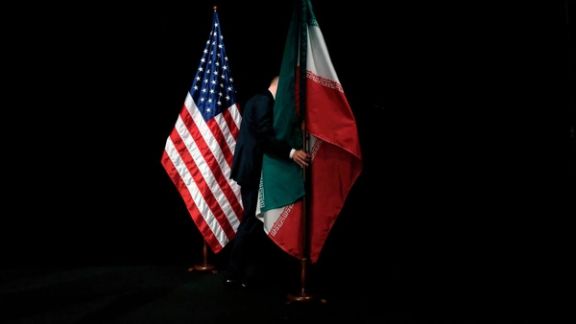US-Iran nuclear diplomacy remains stuck in old patterns

The back-and-forth between Iranian and US leaders over Tehran’s nuclear program and the prospect of negotiations has changed little since at least 2016.
That was when US author and scholar Ray Takeyh published his book Hidden Iran: Paradox and Power in the Islamic Republic. According to Takeyh, since 1979, “getting Iran wrong is the single thread that has linked American administrations of all political persuasions.”
On January 31, 2006, “President George W. Bush described Iran as a nation held hostage by a small clerical elite that is isolating and repressing its people,” and warned that, “The nations of the world must not permit the Iranian regime to gain nuclear weapons.” That sounds all too familiar, doesn’t it?
According to Iran’s official news agency, as quoted by Takeyh, President Mahmoud Ahmadinejad responded swiftly and defiantly, denouncing Bush as someone "whose arms are smeared up to the elbow in the blood of other nations," and threatening: "God willing, we shall drag you to trial in the near future at the courts set up by nations."
That was 19 years ago, when Khamenei was still a relatively restrained Supreme Leader, delegating much of the incendiary rhetoric to his firebrand president. In 2025, he presides over a timid president who adds little to the official line — a line that is always dictated by Khamenei himself. In fact, Iran's rhetoric toward the current US President is notably more restrained.
Yet, as many observers have noted over the past 46 years, Iran and the United States have a tendency to address each other at the wrong times and in the wrong ways. Bush’s labeling of Iran as part of the "axis of evil" was just one moment that derailed budding cooperation in Iraq and Afghanistan and sent both sides back into confrontation — a dynamic that persists to this day.
In last week’s exchange between Washington and Tehran over Iran’s nuclear program, Trump delivered bold and harsh remarks on live television — remarks that Khamenei denounced as "bullying." But Trump also sent more conciliatory messages, according to his Middle East envoy, Steve Witkoff, in a private letter to the Supreme Leader.
Given Khamenei’s well-known sensitivities, he might have better tolerated the harsh language in a private message and possibly even welcomed the friendlier overtures had they been made in public.
Similarly, Tehran’s responses over the past week — starting with a flat rejection of negotiations, moving to an openness to "indirect talks," and concluding with a vague “for the time being” — send a clear signal to US diplomats: Iranian officials are not interested in a public handshake with their American counterparts. Especially not after Khamenei has already set the tone with stern, uncompromising statements.
By contrast, Trump appears to want exactly that public moment — a warm handshake in front of cameras — to distinguish himself from his predecessors. This mismatch in the style and optics of diplomacy makes it difficult for either side to envision a path out of the current impasse.
As with traditional bargaining in Persian bazaars, Iranian negotiators prefer drawn-out talks, complete with repeated withdrawals from and returns to a draft agreement — all to eventually close the deal at the very moment when observers begin to believe it's off the table for good.
What’s different today is that some of those observers — both in the region and beyond — may not want a deal at all, at least not one that allows any form of nuclear capability to survive. For countries like Israel and Saudi Arabia, a weak agreement that merely delays the threat is less acceptable than no deal at all. They would rather see Iran’s nuclear ambitions completely capped than postponed.